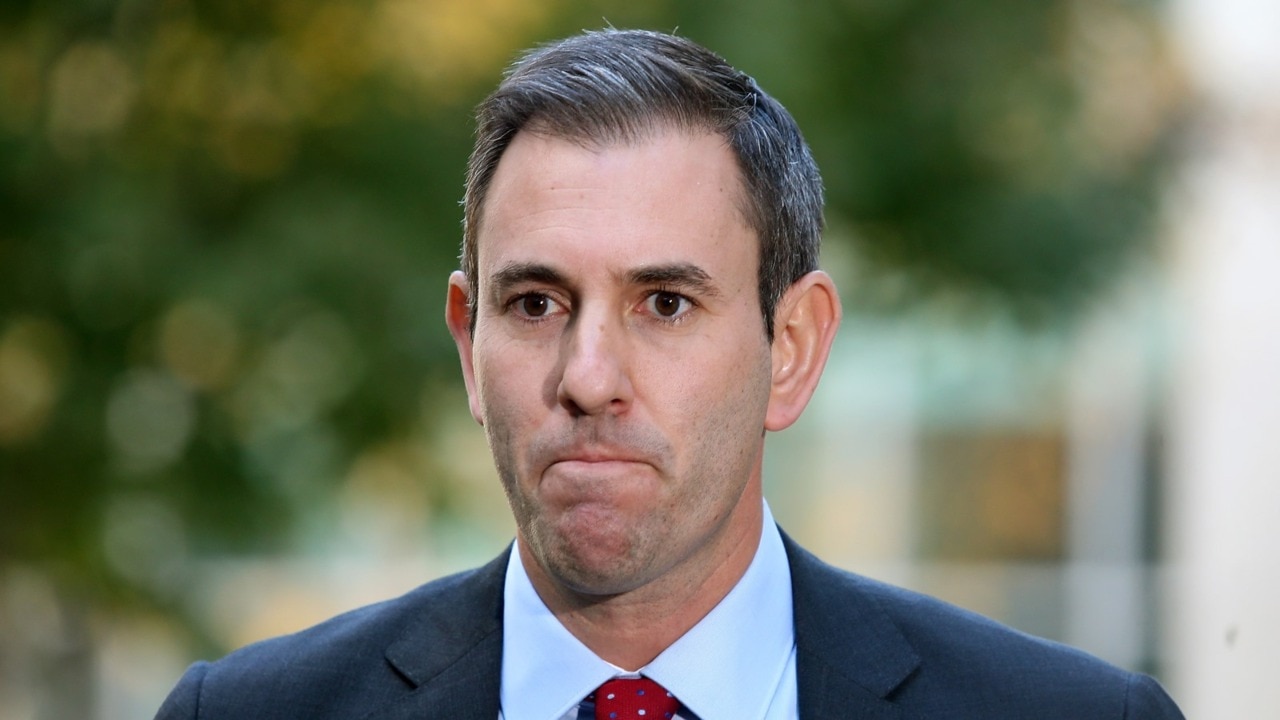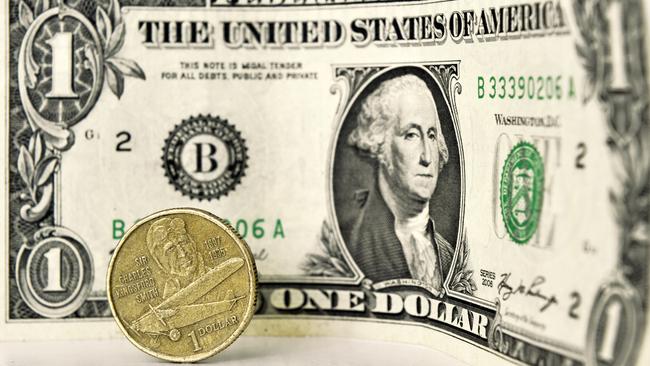Currency sting as the Australian dollar’s fall accelerates
Borrowers and many businesses and travellers are being stung by the sinking Australian dollar, and the fall may not be over yet.

The sliding Aussie dollar is at risk of falling further before Christmas and may prompt the Reserve Bank to raise interest rates higher than otherwise necessary.
In the past six months Australia’s currency has tumbled from US76c to US65c – bad news for inflation, imports and many travellers, but good for farmers and manufacturers.
It’s been a rollercoaster week for our dollar, sinking below US64c on September 30, then recovering to US65.4c on Tuesday before the Reserve Bank’s lower-than-expected interest rate rise pushed it almost US1c lower again. On Wednesday it was trading just below US65c.
This is a story of US dollar strength rather than widespread weakness in the Aussie dollar, which has held its own or performed better than the euro, Japanese yen, British pound and New Zealand dollar this year.
AMP chief economist Shane Oliver said the drop accelerated in late September as the US central bank took a tougher stance on fighting inflation with sharp interest rate rises.
“That has the effect of attracting money into the US rather than Australia,” he said.
Dr Oliver said global recession fears were weighing on commodity price expectations, and the Aussie dollar was also impacted by geopolitical tensions between the US and Russia and China.
“When times are good, it goes through the roof, but right now times are verging on bad,” he said.
“The risks are on the downside … weakness in October and November could push the Australian dollar down towards US60c.”

KPMG chief economist Brendan Rynne said concern about the global economy caused a flight of money to the US dollar, seen as a global safe haven.
He said the Australian dollar was the fifth most traded currency in the world – behind the US, euro, yen and pound – and “we are a speculative currency” linked to commodity prices and demand.
Dr Rynne forecast the Australian dollar to climb in the coming months, buoyed by RBA interest rate rises, Chinese economic stimulus boosting demand for commodities, and recognition of our relatively strong economy.
“Our expectation is we will start to see the Australian dollar trading back up, but it will still be sub-70c,” he said.
BetaShares chief economist David Bassanese said our declining dollar caused imported inflationary pressure, which could prompt higher Reserve Bank interest rate rises in an effort to control it.
“My expectation is the Australian dollar will end the year at around US62-63c,” he said.
Tiger Brokers Australia chief strategy officer Michael McCarthy said the lower dollar was already increasing the likelihood of higher rate increases.
Many countries have currencies anchored to the US dollar, so travellers may need to choose destinations wisely.
“Go to England,” Mr McCarthy said, as the pound has plummeted this year. He said if a 15-20 per cent fall in spending money ruined travel plans, people might need to save more, because a lower Australian dollar was good for the economy.
“It means Australian goods and services become cheaper for international buyers.”





